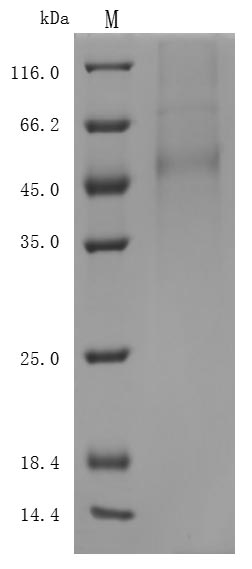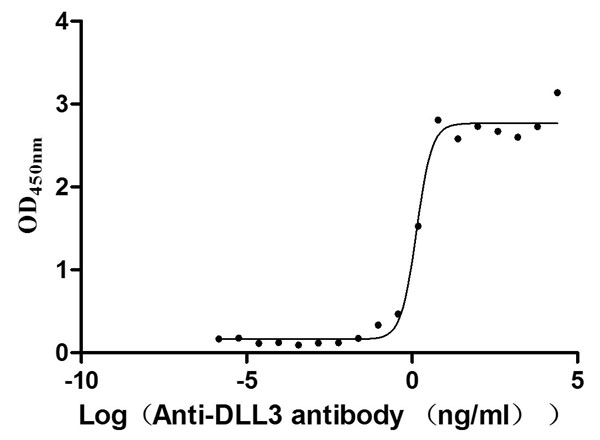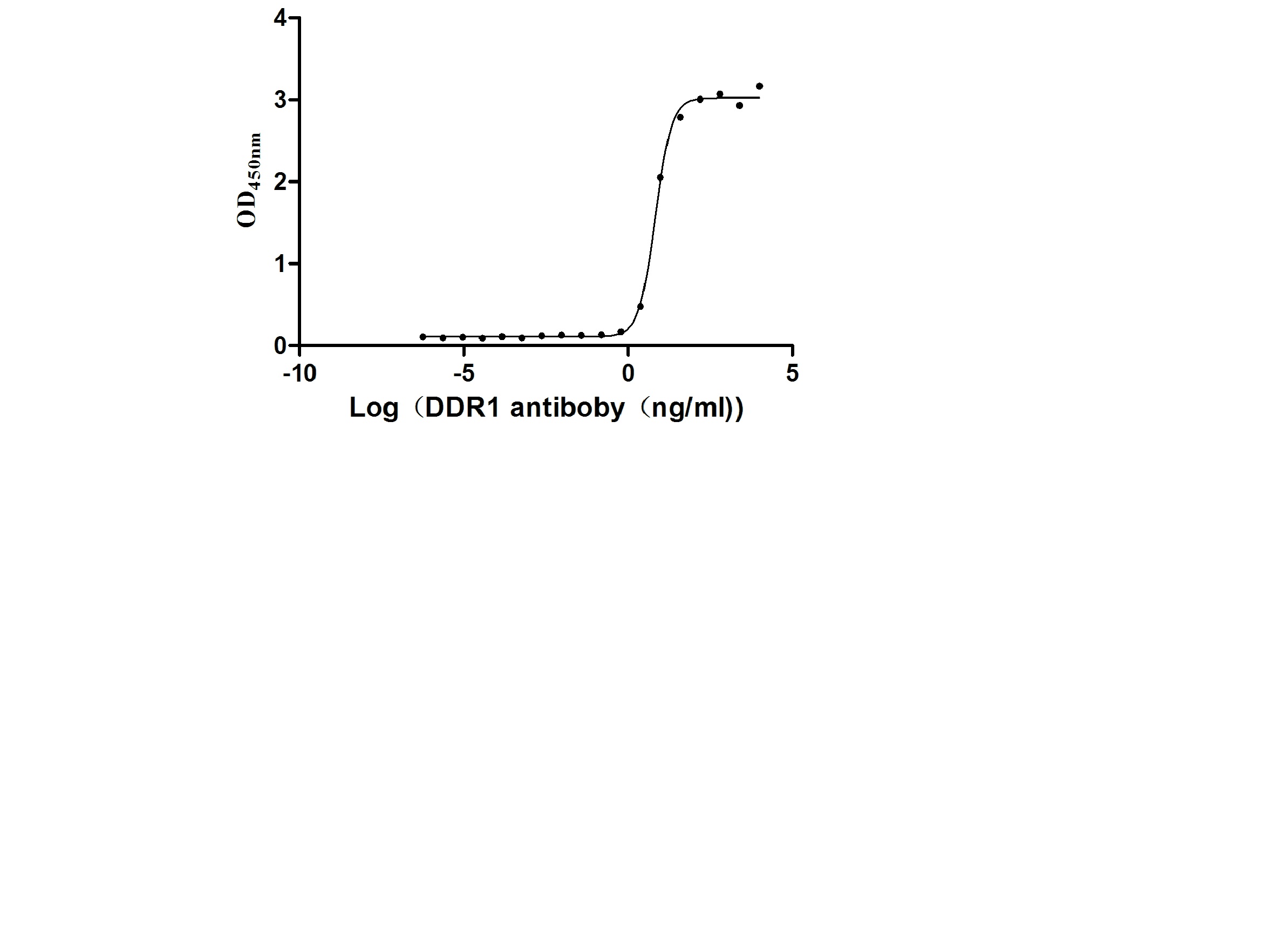CUSABIO's product CSB-MP882142HU is an active protein expressed in mammalian cells. Its gene expression region encodes amino acids 27-492 of the human Delta-like protein 3 (DLL3). It is fused with 6xHis-tag at the C-terminus. According to SDS-PAGE, the purity of this protein is greater than 85%. It migrated to the molecular weight band of about 55 kDa. Its endotoxin is less than 1.0 EU/ug as measured by the LAL method. In the functional ELISA, it can bind to the anti-DLL3 antibody, and the EC50 is 1.102-1.707 ng/mL. DLL3 is a ligand of Notch signaling, which mediates cell‐fate decisions and is tumor‐inhibitory or oncogenic depending on the cellular context. It is highly upregulated and abnormally expressed on the cell surface in small cell lung cancer (SCLC).









